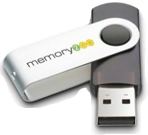USB Memory Stick Data Recovery
USB Memory Stick Data Recovery Specialists in London
USB memory sticks are extremely useful data storage devices which can be used for storing photos, documents, notes, projects and programming code. There are a variety of different types of USB memory sticks and each type make them different in performance, and reliability. They come in different shapes, sizes and colours including some really fancy shapes looking like a real key or even tiny doll which can be fitted in your keyring. USB memory sticks also have different names such as “flash drive”, “thumb drive”, “jump drive”, and “pen drive”. These small data storage devices have been designed to be much smaller than a typical external hard drive. That is why some people know them as pen drives, while others prefer to call them “thumb drives”. Whatever the name, they all share one important characteristic, they can be hooked up to any computer. Thanks to their universal serial bus (USB) port compatibility.
How does a USB memory stick work?
A USB memory stick is a non-volatile device. It has to resort to power to save, transfer and put data onto it. However, it can keep data stored inside it without a power supply. Even if there is no power source for a long time from the connected and powered-off computer, it can still retain all the information without any harm and quality loss.
Difference Between a USB 2.0 and a 3.0 USB memory stick
USB 3.1 and 3.2 ports – These are the latest and fastest ones in the world of USB memory sticks today, with the write-and-read speed of up to 1250 MB/sec and 2500 MB/sec, respectively. USB 3.0 USB memory sticks however, can only deal with data at the speed of 625 MB/sec and are slower. Due to its fast speed in writing, reading and transferring data, USB 3.2 thumb drive has become a more popular choice for users.
USB memory stick data recovery
The bad news however is that USB memory sticks do fail and some types of memory sticks -mainly the cheaper consumer-grade ones fail more often and users will lose access to their data as a result. There two types of failure: electronic and logical failure. In electronic failure, the electronic circuite inside the USB memory stick fails therefore making data recovery more difficult and more expensive. In some cases, we have to remove the data chip and dump its contents onto a chip reader. This will enable the data recovery technician to image the data and perform a successful data recovery. Logical data recovery is when you either accidentally format the memory stick or you delete a folder or a file. The task of the data recovery technician becomes much more difficult if the user starts using the formatted memory stick and/or uses software downloaded software from the internet in order to perform a DIY USB memory stick data recovery.
If you have a faulty or failed memory stick and you want to your data recovered, we can help you by professionally go through the entire process of recovery using a combination of manual and semi-automatic advanced tools we have. Just call us on 02075161077 and speak to us or make an online inquiry here.

